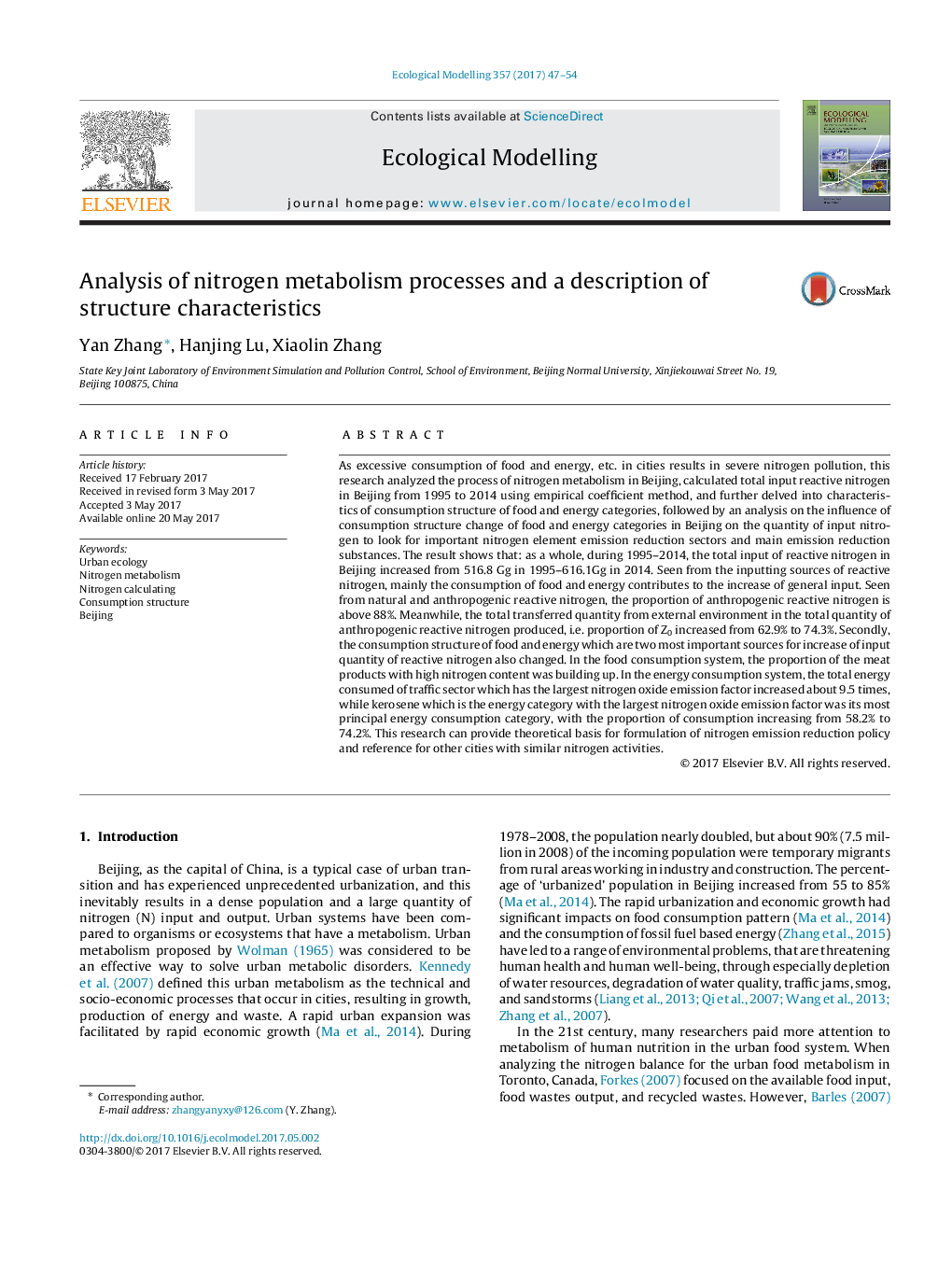| کد مقاله | کد نشریه | سال انتشار | مقاله انگلیسی | نسخه تمام متن |
|---|---|---|---|---|
| 5742097 | 1617390 | 2017 | 8 صفحه PDF | دانلود رایگان |
- We calculated total input reactive nitrogen in Beijing from 1995-2014.
- We further delved into characteristics of consumption structure of food and energy categories.
- Mainly the consumption of food and energy contributes to the increase of general input.
- The proportion of the meat products was building up, and the total energy consumed of traffic sector increased largely.
- This research can provide theoretical basis for formulation of nitrogen emission reduction policy for other cities.
As excessive consumption of food and energy, etc. in cities results in severe nitrogen pollution, this research analyzed the process of nitrogen metabolism in Beijing, calculated total input reactive nitrogen in Beijing from 1995 to 2014 using empirical coefficient method, and further delved into characteristics of consumption structure of food and energy categories, followed by an analysis on the influence of consumption structure change of food and energy categories in Beijing on the quantity of input nitrogen to look for important nitrogen element emission reduction sectors and main emission reduction substances. The result shows that: as a whole, during 1995-2014, the total input of reactive nitrogen in Beijing increased from 516.8 Gg in 1995-616.1Gg in 2014. Seen from the inputting sources of reactive nitrogen, mainly the consumption of food and energy contributes to the increase of general input. Seen from natural and anthropogenic reactive nitrogen, the proportion of anthropogenic reactive nitrogen is above 88%. Meanwhile, the total transferred quantity from external environment in the total quantity of anthropogenic reactive nitrogen produced, i.e. proportion of Z0 increased from 62.9% to 74.3%. Secondly, the consumption structure of food and energy which are two most important sources for increase of input quantity of reactive nitrogen also changed. In the food consumption system, the proportion of the meat products with high nitrogen content was building up. In the energy consumption system, the total energy consumed of traffic sector which has the largest nitrogen oxide emission factor increased about 9.5 times, while kerosene which is the energy category with the largest nitrogen oxide emission factor was its most principal energy consumption category, with the proportion of consumption increasing from 58.2% to 74.2%. This research can provide theoretical basis for formulation of nitrogen emission reduction policy and reference for other cities with similar nitrogen activities.
Journal: Ecological Modelling - Volume 357, 10 August 2017, Pages 47-54
